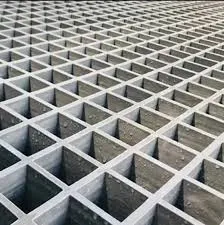
-
 Afrikaans
Afrikaans -
 Albanian
Albanian -
 Amharic
Amharic -
 Arabic
Arabic -
 Armenian
Armenian -
 Azerbaijani
Azerbaijani -
 Basque
Basque -
 Belarusian
Belarusian -
 Bengali
Bengali -
 Bosnian
Bosnian -
 Bulgarian
Bulgarian -
 Catalan
Catalan -
 Cebuano
Cebuano -
 China
China -
 China (Taiwan)
China (Taiwan) -
 Corsican
Corsican -
 Croatian
Croatian -
 Czech
Czech -
 Danish
Danish -
 Dutch
Dutch -
 English
English -
 Esperanto
Esperanto -
 Estonian
Estonian -
 Finnish
Finnish -
 French
French -
 Frisian
Frisian -
 Galician
Galician -
 Georgian
Georgian -
 German
German -
 Greek
Greek -
 Gujarati
Gujarati -
 Haitian Creole
Haitian Creole -
 hausa
hausa -
 hawaiian
hawaiian -
 Hebrew
Hebrew -
 Hindi
Hindi -
 Miao
Miao -
 Hungarian
Hungarian -
 Icelandic
Icelandic -
 igbo
igbo -
 Indonesian
Indonesian -
 irish
irish -
 Italian
Italian -
 Japanese
Japanese -
 Javanese
Javanese -
 Kannada
Kannada -
 kazakh
kazakh -
 Khmer
Khmer -
 Rwandese
Rwandese -
 Korean
Korean -
 Kurdish
Kurdish -
 Kyrgyz
Kyrgyz -
 Lao
Lao -
 Latin
Latin -
 Latvian
Latvian -
 Lithuanian
Lithuanian -
 Luxembourgish
Luxembourgish -
 Macedonian
Macedonian -
 Malgashi
Malgashi -
 Malay
Malay -
 Malayalam
Malayalam -
 Maltese
Maltese -
 Maori
Maori -
 Marathi
Marathi -
 Mongolian
Mongolian -
 Myanmar
Myanmar -
 Nepali
Nepali -
 Norwegian
Norwegian -
 Norwegian
Norwegian -
 Occitan
Occitan -
 Pashto
Pashto -
 Persian
Persian -
 Polish
Polish -
 Portuguese
Portuguese -
 Punjabi
Punjabi -
 Romanian
Romanian -
 Russian
Russian -
 Samoan
Samoan -
 Scottish Gaelic
Scottish Gaelic -
 Serbian
Serbian -
 Sesotho
Sesotho -
 Shona
Shona -
 Sindhi
Sindhi -
 Sinhala
Sinhala -
 Slovak
Slovak -
 Slovenian
Slovenian -
 Somali
Somali -
 Spanish
Spanish -
 Sundanese
Sundanese -
 Swahili
Swahili -
 Swedish
Swedish -
 Tagalog
Tagalog -
 Tajik
Tajik -
 Tamil
Tamil -
 Tatar
Tatar -
 Telugu
Telugu -
 Thai
Thai -
 Turkish
Turkish -
 Turkmen
Turkmen -
 Ukrainian
Ukrainian -
 Urdu
Urdu -
 Uighur
Uighur -
 Uzbek
Uzbek -
 Vietnamese
Vietnamese -
 Welsh
Welsh -
 Bantu
Bantu -
 Yiddish
Yiddish -
 Yoruba
Yoruba -
 Zulu
Zulu
fiberglass clarifier
Understanding Fiberglass Clarifiers A Crucial Component in Water Treatment
In the realm of water treatment, fiberglass clarifiers stand out as a pivotal technology used to enhance the quality of effluent and ensure compliance with environmental standards. These innovative structures play a key role in sedimentation processes, allowing for effective separation of solids from liquids in wastewater treatment facilities. As communities and industries increasingly recognize the importance of sustainable water management, the adoption of fiberglass clarifiers has grown significantly.
What is a Fiberglass Clarifier?
A fiberglass clarifier is a type of sedimentation tank constructed primarily from fiberglass-reinforced plastic (FRP). This material choice provides several advantages over traditional concrete or metal tanks, such as improved corrosion resistance, lighter weight, and ease of installation. A fiberglass clarifier typically consists of a large tank designed to hold wastewater, equipped with a system to facilitate the settling of suspended solids.
How Do Fiberglass Clarifiers Work?
The operation of a fiberglass clarifier is relatively straightforward. Wastewater flows into the clarifier, where it is given ample time to slow down. As the water moves slowly through the tank, gravity acts on the suspended solids, causing them to settle at the bottom. This settled material, known as sludge, is then periodically removed from the tank. Meanwhile, the clearer water on the surface exits the clarifier through an effluent outlet, ready for further treatment or discharge.
Fiberglass clarifiers may incorporate various features to enhance their performance. For example, some models include lamella plates or inclined channels that increase the effective settling area, allowing for greater sedimentation in a smaller footprint. Additionally, advanced designs may utilize baffles to improve flow distribution and reduce turbulence.
Advantages of Using Fiberglass Clarifiers
fiberglass clarifier

1. Corrosion Resistance One of the primary benefits of fiberglass is its resistance to corrosion. Unlike metal tanks that can degrade over time when exposed to harsh chemicals, fiberglass retains its structural integrity, which significantly extends the life of the clarifier.
2. Lightweight Design The lightweight nature of fiberglass facilitates easier transportation and installation. This is particularly advantageous for remote or difficult-to-access locations where heavy equipment cannot be easily deployed.
3. Customizability Fiberglass clarifiers can be manufactured in various shapes and sizes, making them adaptable to specific site requirements. Engineers can design a clarifier that fits within the unique constraints of a wastewater treatment facility.
4. Cost-Effective While the initial investment in fiberglass clarifiers may be higher than some alternatives, their longevity and reduced maintenance needs often lead to long-term cost savings. Furthermore, the efficiency of these clarifiers can enhance overall treatment processes, yielding better-quality effluent.
5. Sustainability With the increasing emphasis on eco-friendly technologies, fiberglass clarifiers contribute to sustainable water management practices. By improving the efficiency of sedimentation processes, these clarifiers can help reduce the energy and chemical costs associated with water treatment.
Conclusion
As the demand for effective water treatment solutions continues to rise, fiberglass clarifiers emerge as a crucial component in the infrastructure of sewage and wastewater management systems. Their unique properties, such as corrosion resistance, lightweight design, and adaptability, position them as a favored choice among engineers and facility operators. By employing fiberglass clarifiers, municipalities and industries can achieve improved water quality, comply with regulatory standards, and support sustainable environmental practices.
The future of water treatment will likely see increasing innovation, and fiberglass clarifiers will play an important role in this evolution. As technology advances, so too will the capabilities of these structures, ensuring that they continue to meet the challenges of modern water management. In summary, fiberglass clarifiers are more than just tanks; they are essential instruments in the quest for cleaner, safer water.









